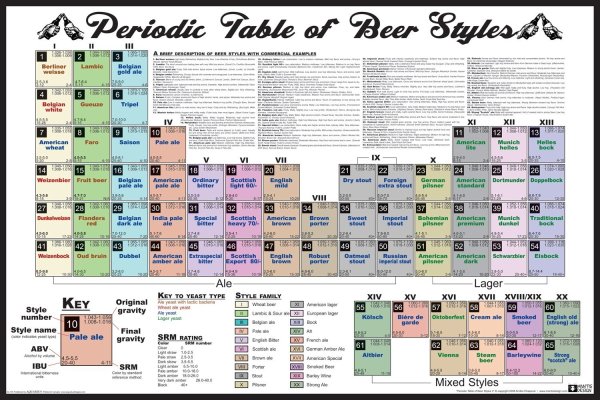Midpack
Give me a museum and I'll fill it. (Picasso) Give me a forum ...
Question: How can I order a somewhat balanced beer (mild bitterness) I haven't tried before without having to look it up on my smartphone before ordering?
If necessary - Background, what I think I've learned: With the many styles one can get these days (a good thing), it's even harder for me to know what I will like/not like in advance. I don't like "hoppy" beers - though I now realize that's a widely misused term. There are many different hops, with different flavors, that can be added in different quantities at different points during brewing. Most people would not like a beer with no hops, it would probably be very sweet. Some hops balance malt sweetness, but some (craft) brewers have really gone to extremes with hops. If you give me an IPA, even though they're very popular these days, no way I'd finish it.
So I stumbled on IBU (International Bittering Units) and thought I had my answer. Unfortunately it's not that simple either. I have had Russian Imperial Stouts that didn't taste bitter (higher IBU), but a light ale with the same IBU wouldn't be drinkable (for me). OTOH, a low IBU may be a nicely balanced beer, but it might be too sweet too. The IBU reading that would begin to balance a beer, varies considerably with each of the many beer styles.
So to order a beer I haven't had, do I really have to research the style and IBU range for the style every time? Or just keep ordering and hating some of the beers I pay good money for? I've had a few that I left on the table. I always like to try new things, so finding a few I like and ordering them over and over isn't an acceptable answer for me.
If necessary - Background, what I think I've learned: With the many styles one can get these days (a good thing), it's even harder for me to know what I will like/not like in advance. I don't like "hoppy" beers - though I now realize that's a widely misused term. There are many different hops, with different flavors, that can be added in different quantities at different points during brewing. Most people would not like a beer with no hops, it would probably be very sweet. Some hops balance malt sweetness, but some (craft) brewers have really gone to extremes with hops. If you give me an IPA, even though they're very popular these days, no way I'd finish it.
So I stumbled on IBU (International Bittering Units) and thought I had my answer. Unfortunately it's not that simple either. I have had Russian Imperial Stouts that didn't taste bitter (higher IBU), but a light ale with the same IBU wouldn't be drinkable (for me). OTOH, a low IBU may be a nicely balanced beer, but it might be too sweet too. The IBU reading that would begin to balance a beer, varies considerably with each of the many beer styles.
So to order a beer I haven't had, do I really have to research the style and IBU range for the style every time? Or just keep ordering and hating some of the beers I pay good money for? I've had a few that I left on the table. I always like to try new things, so finding a few I like and ordering them over and over isn't an acceptable answer for me.
Last edited:





